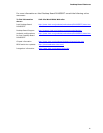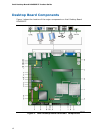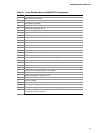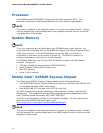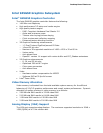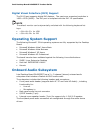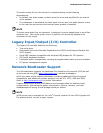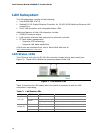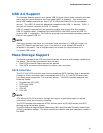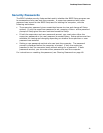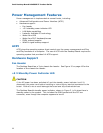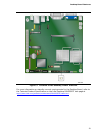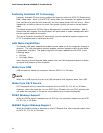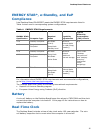
Desktop Board Features
19
USB 2.0 Support
The Desktop Board supports up to seven USB 2.0 ports (three ports routed to the back
panel and four ports routed to two front panel USB 2.0 headers). One of the front
panel USB headers supports an Intel Z-U130 USB Solid-State Drive (or compatible
device). The USB 2.0 ports are backward compatible with USB 1.1 devices. USB 1.1
devices will function normally at USB 1.1 speeds.
USB 2.0 support requires both an operating system and drivers that fully support
USB 2.0 transfer rates. Disabling High-Speed USB in the BIOS reverts all USB 2.0
ports to USB 1.1 operation. This may be required to accommodate operating systems
that do not support USB 2.0.
NOTE
Computer systems that have an unshielded cable attached to a USB port might not
meet FCC Class B requirements, even if no device or a low-speed USB device is
attached to the cable. Use a shielded cable that meets the requirements for a
full-speed USB device.
Mass Storage Support
The board provides three ATA connectors that can be used to add storage capability to
the board. The following connectors are included:
• One PATA connector that supports two devices
• Two SATA connectors that support one device per connector
PATA Interface
The ICH7-M’s PATA controller has one bus-mastering PATA interface that is accessible
through a 44-pin connector that is compatible with 2.5 or 3.5 inch PATA hard drives
(including power support for 2.5 inch hard drives). The PATA interface supports the
following modes:
• Programmed I/O (PIO)
• 8237-style DMA
• Ultra DMA
• ATA-66
• ATA-100
NOTE
ATA-66 and ATA-100 are faster timings and require a specialized cable to reduce
reflections, noise, and inductive coupling.
The PATA interface also supports ATAPI devices (such as CD-ROM drives) and ATA
devices using the transfer modes.
The BIOS supports Logical Block Addressing (LBA) and Extended Cylinder Head Sector
(ECHS) translation modes. The drive reports the transfer rate and translation mode to
the BIOS.



